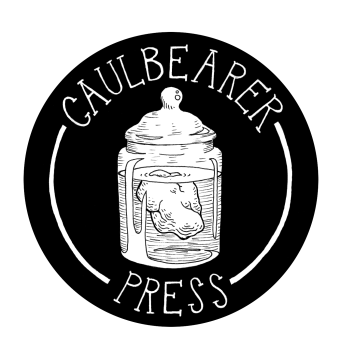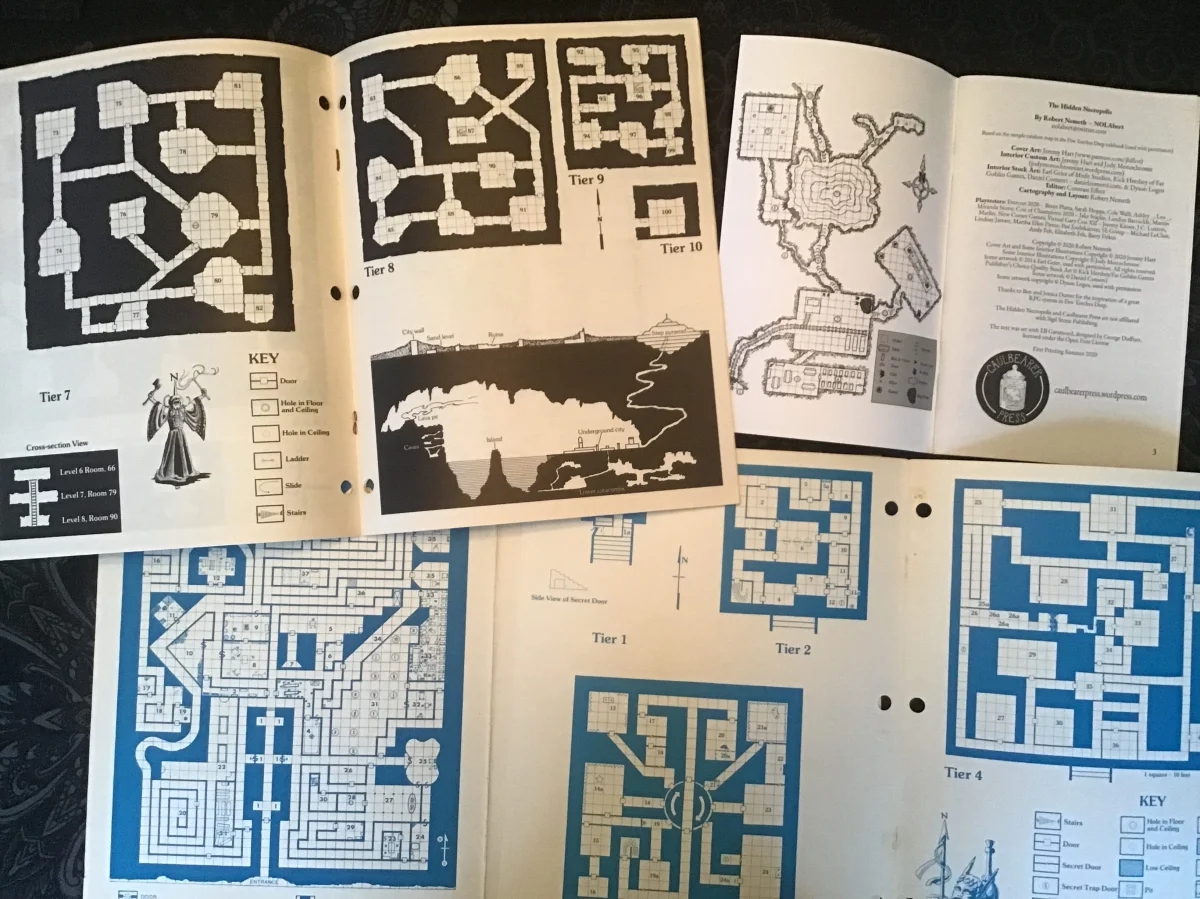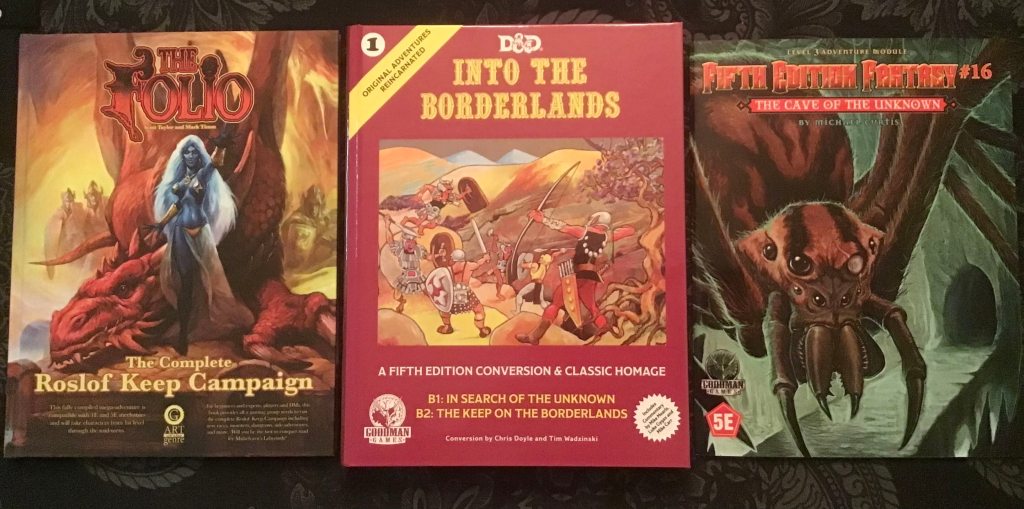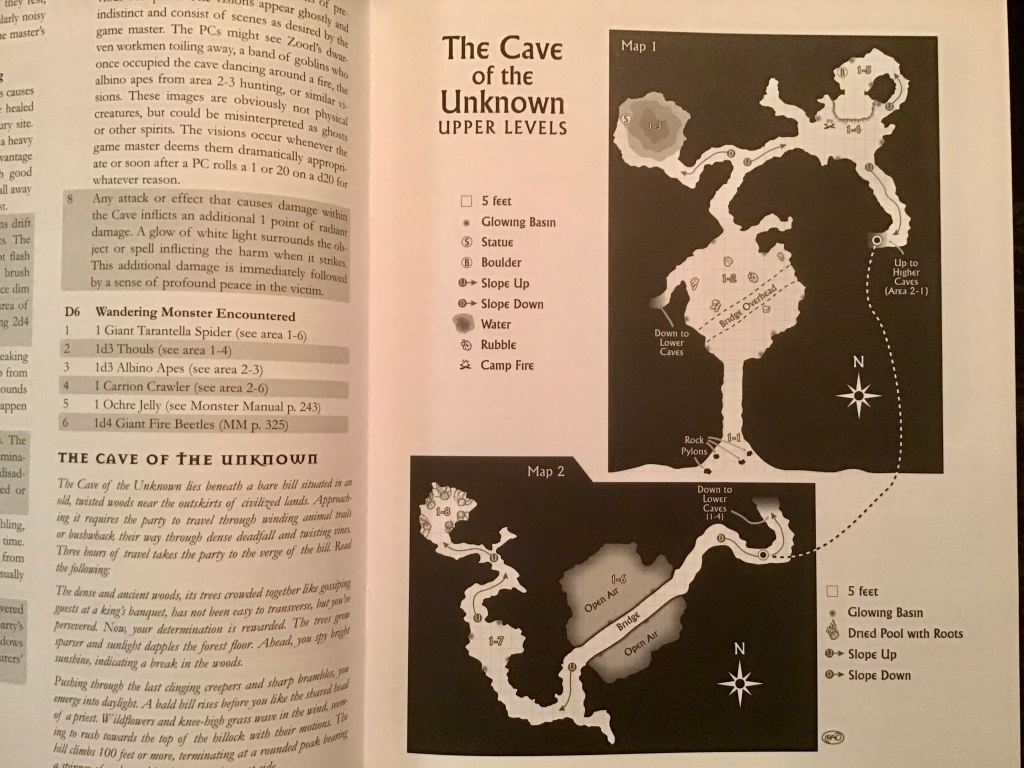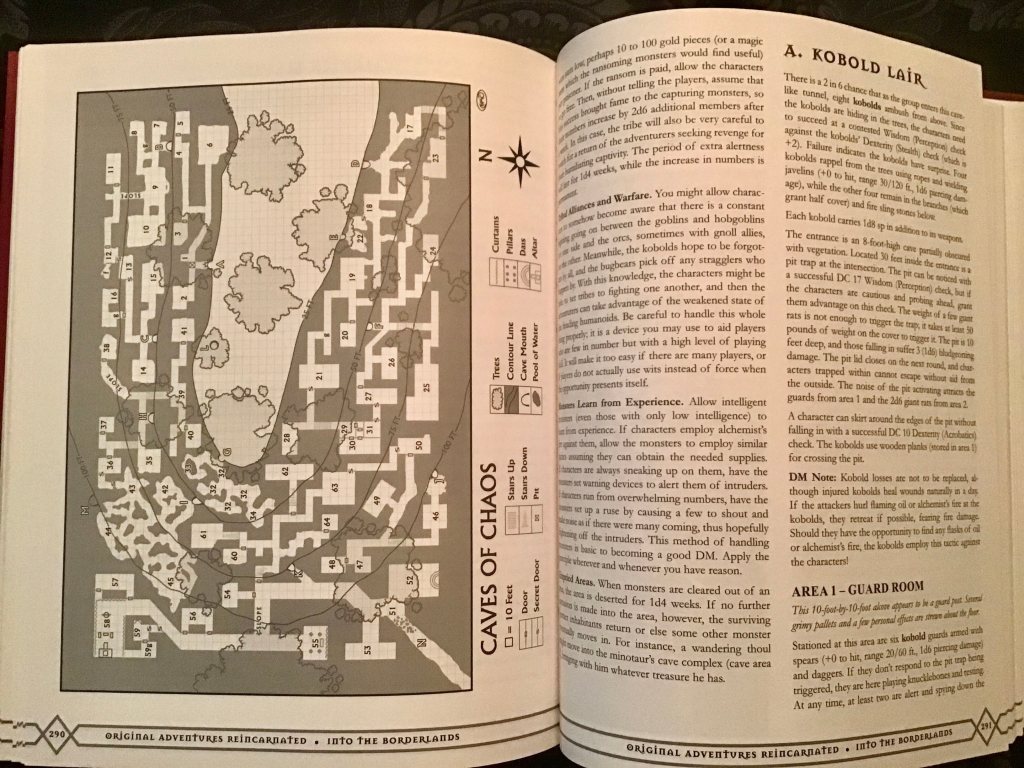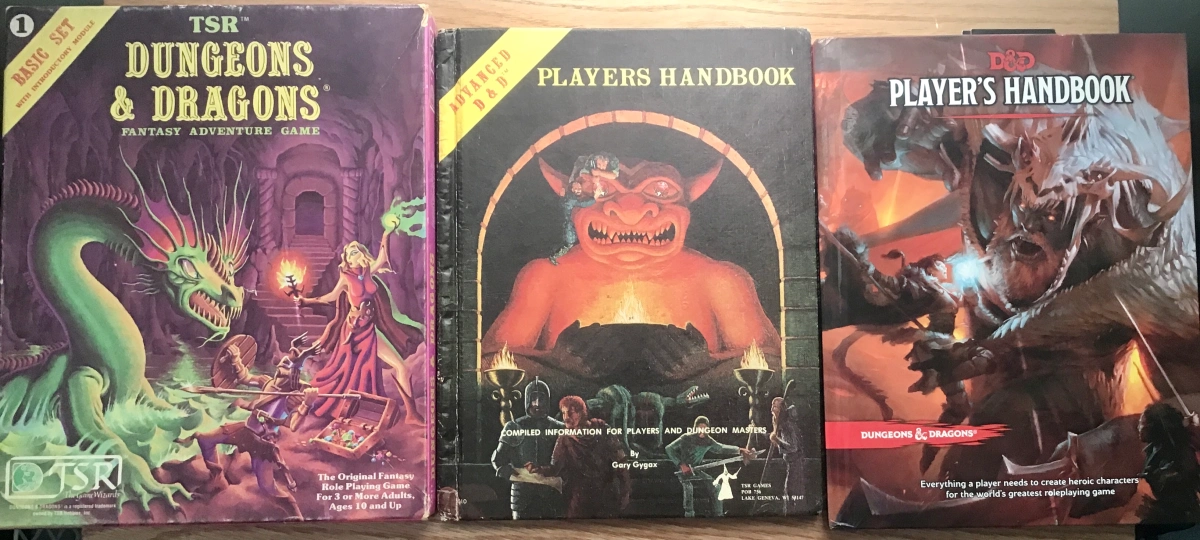Gary Con XIV took place about two weeks ago. It was my first time attending. I had planned on going in 2020 but the pandemic put those plans to rest. I had a great time playing in eight games: Mothership, OSE, DCC, Swords & Wizardry, Holmes Basic, Hyperborea, and a Mystara-based B/X game. Attending Gary Con put me in the mind to reflect on con experiences in general.
I returned to tabletop RPGs in 2015. I played AD&D, Star Frontiers, The James Bond RPG, and The Doctor Who RPG back when I was a kid. Other than a short stint of 2E AD&D in college, I took a long break in between playing ttRPGs. When I returned to tabletop RPGs, I played mostly 5E, but since then I’ve moved on to more OSR and indie games.
I started attending cons in 2017, going to my first Meeplestock that summer. Meeplestock is a small, local gaming con of a few hundred attendees. I’ve gone each summer from 2017-2019, but it looks like the pandemic has killed it. I’ve also attended Evercon since 2018. Evercon is a small con in central WI, larger and with a stronger emphasis on ttRPGs than Meeplestock. I attended Evercon 22 at the beginning of March.
The other larger con I go to is Gamehole Con in Madison, WI. I started attending in 2018 and while there was no 2020 con, it was great to be back at Gamehole in 2021.
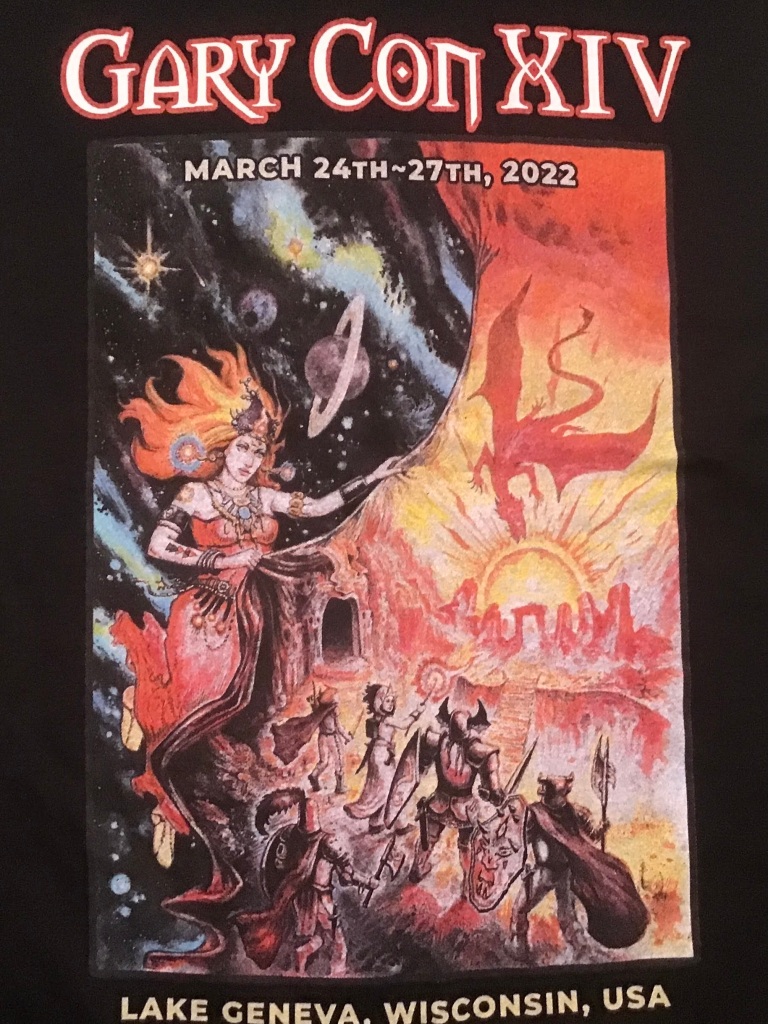
Gary Con Compared to Gamehole Con
Both Gary Con and Gamehole are larger cons with thousands of attendees. Both attract industry notables. Comparing the two, Gary Con felt more old-school with a larger variety of old-school games offered and a crowd focused on old-school gaming. At Gamehole, DCC and Hyperborea are the two systems I mostly play. Other old-school systems just haven’t been offered as much.
Both Gamehole and Gary Con have a 5E AL presence, but it’s larger at Gamehole. Both cons have their share of D&D celebrities who attend. Matt Mercer attended Gamehole VI and Satine Phoenix was married at Gary Con XIV. I’ve heard people grumble about this aspect of these cons, but given the size of these cons and the popularity of 5E, I think this is likely here to stay. I just ignore that aspect of the larger cons and focus on gaming.
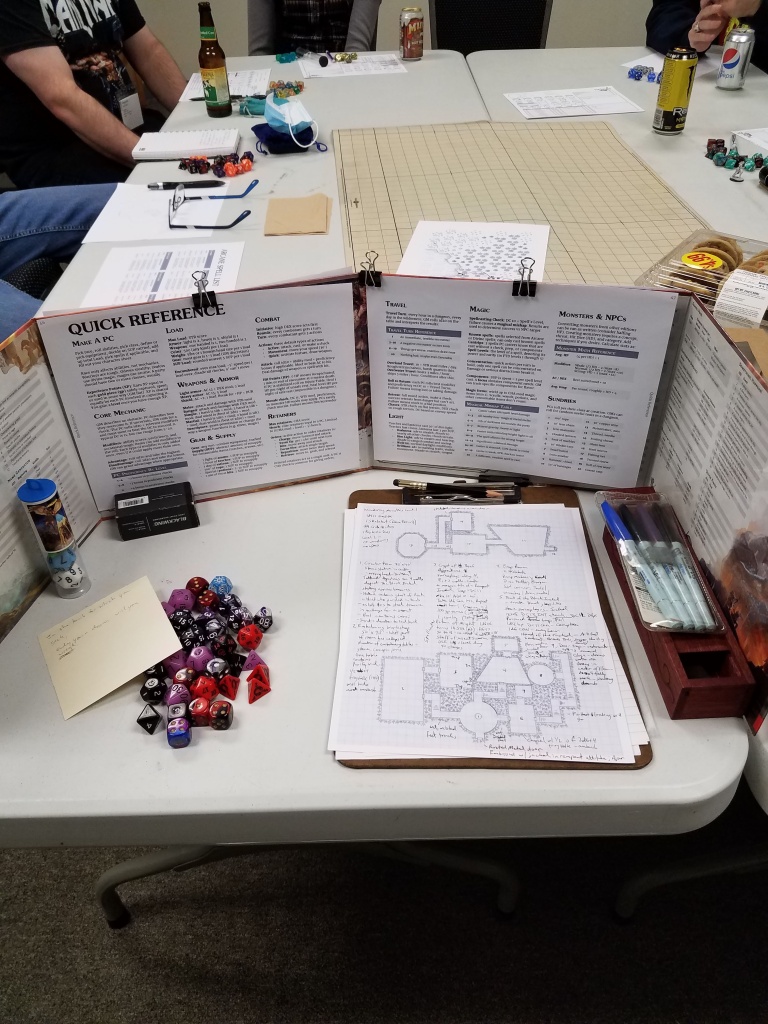
Big Cons Compared to Little Cons
A note on language here, I’m using my experiences to label Gamehole and Gary Con as big cons at least in comparison to cons like Evercon. I understand Gen Con and Origins are really at a different level altogether, but I’ve never been to one of those and have no immediate plans to go to one of the gigantic cons.
Obviously, bigger cons have more opportunities than smaller cons: more opportunity to play different systems, play games run by GMs you’ve heard about, meet folks in the hobby, attend interesting seminars, and buy great loot in the vendor hall. But small cons have a more laid back feel to them. There is little to no schmoozing by names in the hobby. The entire focus is just gaming, but there are limits there. Running OSR and indie systems might result in you not getting enough players for your session. At Evercon 22 I watched a GM set up to run Free League’s Alien RPG only to end up with an empty table (I did play in that same GM’s Forbidden Lands game later in the con—glad his con experience wasn’t a total wash).
The vendor hall at small cons is also much more limited. I made a single purchase at Evercon this year—a vintage Red Sonja comic from the 1970s. At Gary Con, I purchased about $150 worth of gaming supplements and supplies (like Game Science Dice direct from Lou Zocchi). Since I plan on going to both Gamehole Con (fall) and Gary Con (spring) every year, I’m even scaling back my online purchases and instead am waiting for the cons to make purchases. I find that when I’m paying in cash in person, I’m more deliberate with my purchases.
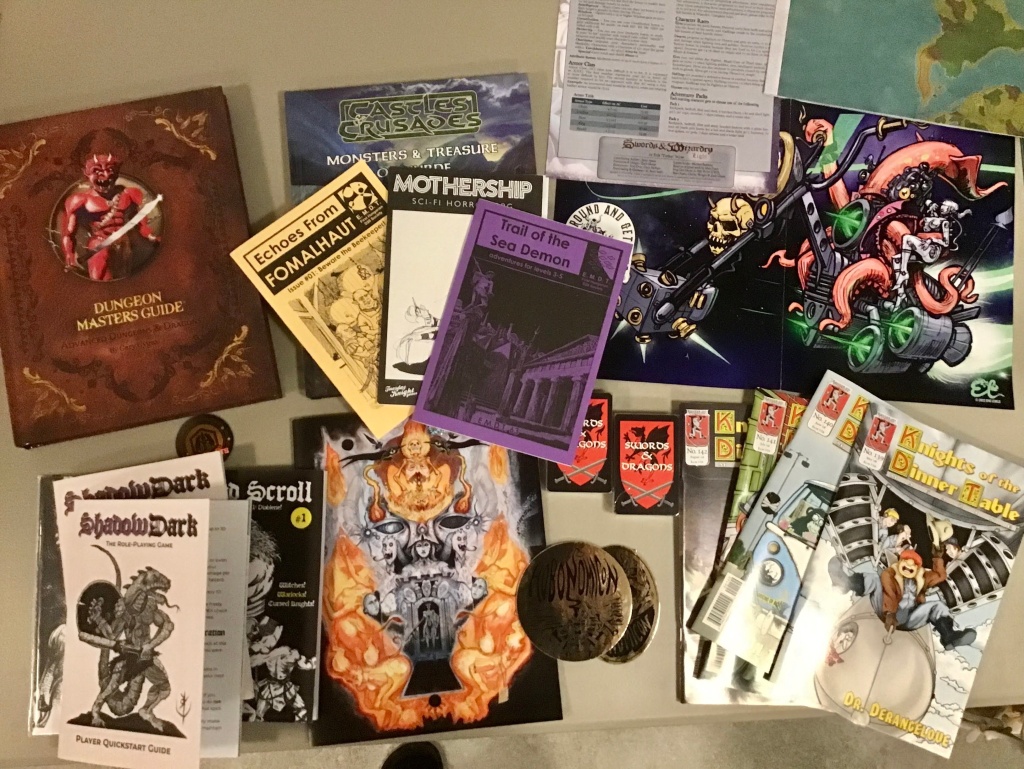
Con Issues
Cons have some issues that can affect the overall experience:
Pregens vs. Rolling Up Characters: it’s been my experience that rolling up characters tends to offer little for one-shots. It’s better to provide pregens or at least the option of pregens for those who don’t want to roll-up a character. The exception may be for sessions where teaching character generation is part of the experience.
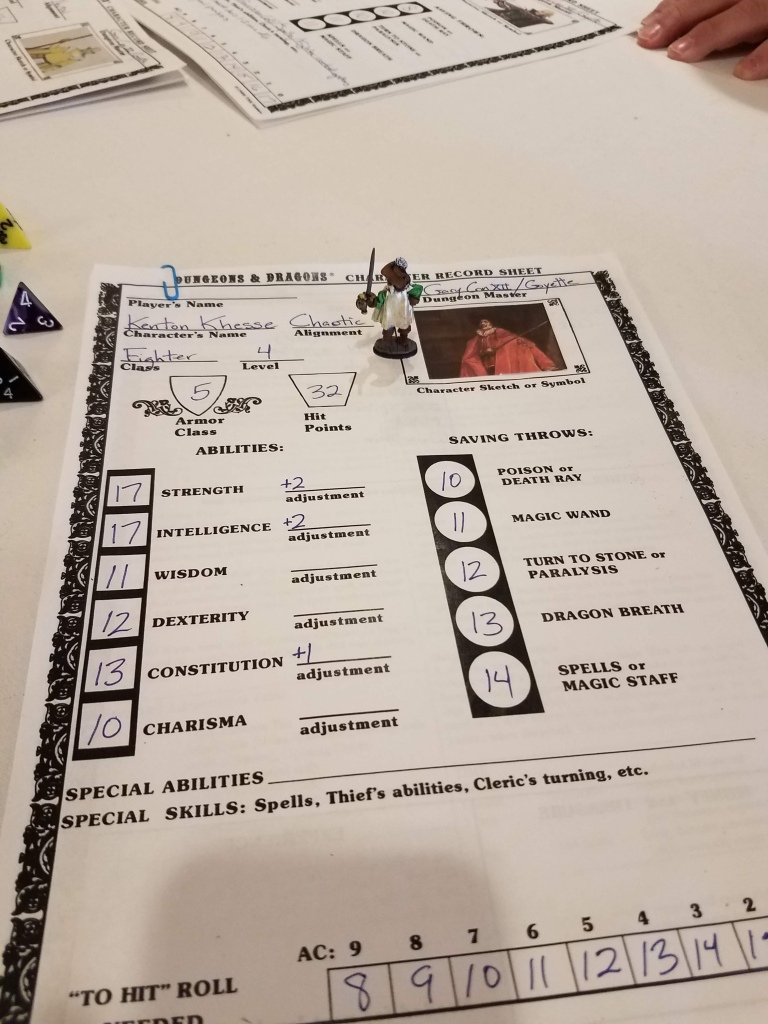
Dominant Players: This isn’t an issue limited to cons, but GM’s would be wise to not let outspoken players dominate con games, especially since many players use con games to try out new systems. Do you want your players’ experiences with a system tarnished because another player hogged the spotlight?
Ambient Noise and Projecting One’s Voice: as a university professor in my day job, I’ve learned how to project my voice (I often teach 120 student lecture halls). And I’m an introvert and generally soft-spoken guy. If your voice is on the softer side or the pitch of your voice blends in with the frequencies of the room chatter, practice projecting your voice. Make sure you have a beverage during the game to keep your throat lubricated.
Session Length: The standard is 4 hours. Longer sessions at cons can be tough, especially if you’re running at night and your players are on their 2nd or 3rd game of the day. Short sessions of 2 hours can work if you’re shooting for a limited encounter. The best con experiences I’ve had have been in sessions that reached a conclusion rather than ending just because the time was up (I’ve been guilty of this myself, though—with playtests of longer material, it might not be entirely possible).
Descriptions Appropriate to the Genre: This really isn’t limited to cons, but it’s where I noticed it. This might just be my personal preference (although I’ve spoken with others who share the same predilection), but I’m not a fan of modern descriptions within the fantasy milieu (e.g., using an NFL football reference to describe the movement of monsters in a fantasy game). I find evoking those images interferes with the immersion of the game. I feel similarly about certain stereotyped voices for NPCs (e.g., the surfer dude or the mobster in fantasy games).
Food at the Con: This issue isn’t a GM problem, but a con organizer issue. I go to cons to play games. I don’t want to have to go offsite for food. Gamehole brings in a variety of food trucks which is nice to satisfy different food preferences (general advice—you can’t go wrong with tacos!). Evercon has fairly typical concession-style food options (e.g., burgers, brats, hot dogs, etc.). Gary Con has nice restaurants at the resort (but they can be pricey). The cheaper food options at Gary Con were fine (more concession style), but once I ate at the cafe on site, I didn’t really want the concession-style food. Breakfast options may not be a bad idea for those early con attendees. And make sure there is coffee and beer on site!
